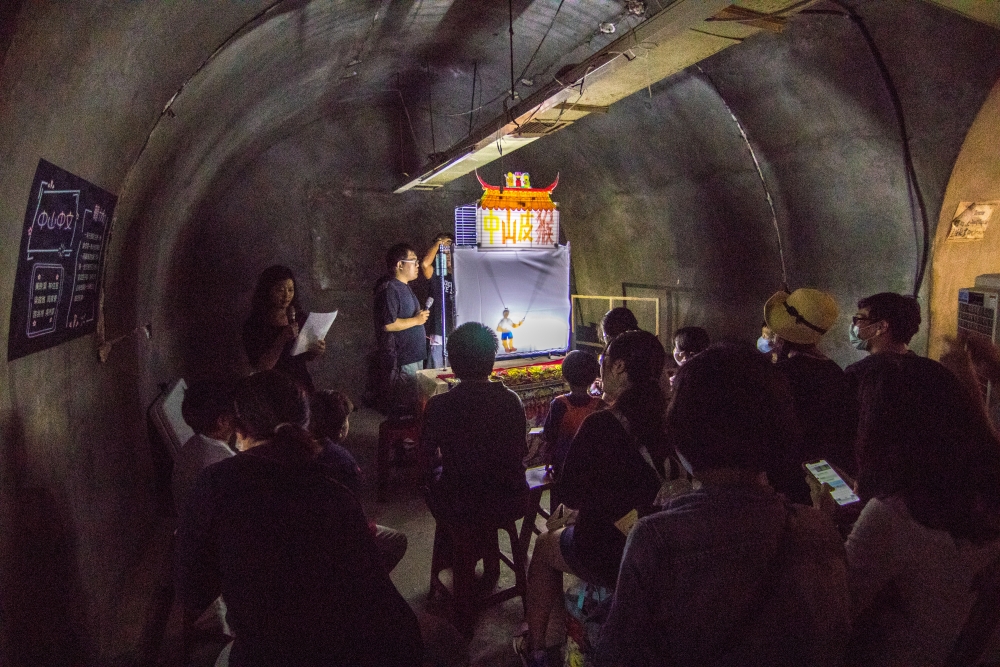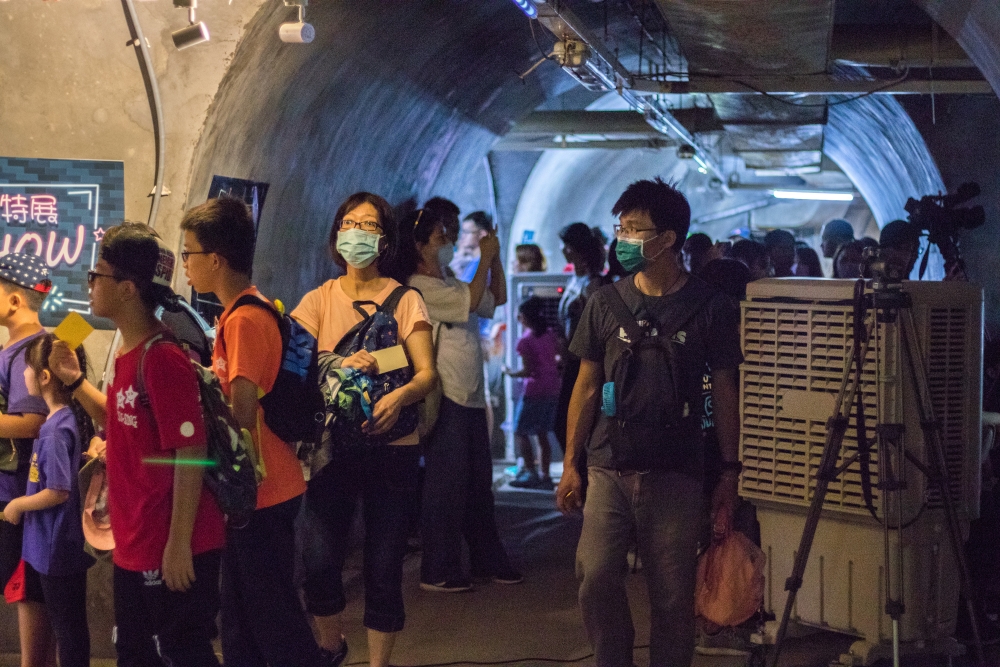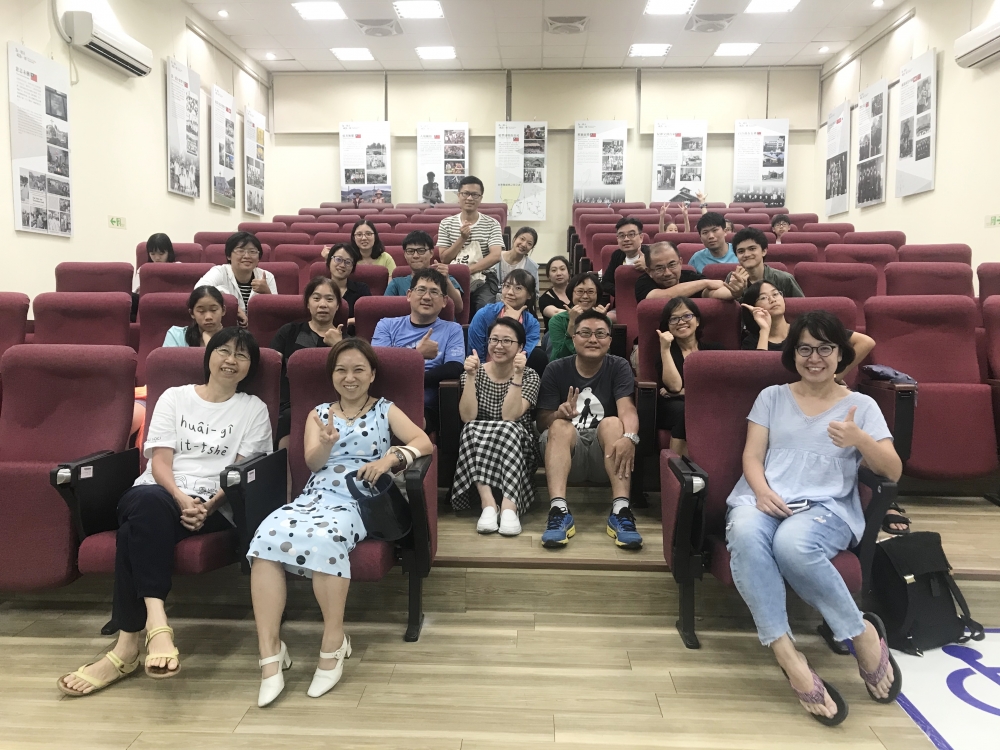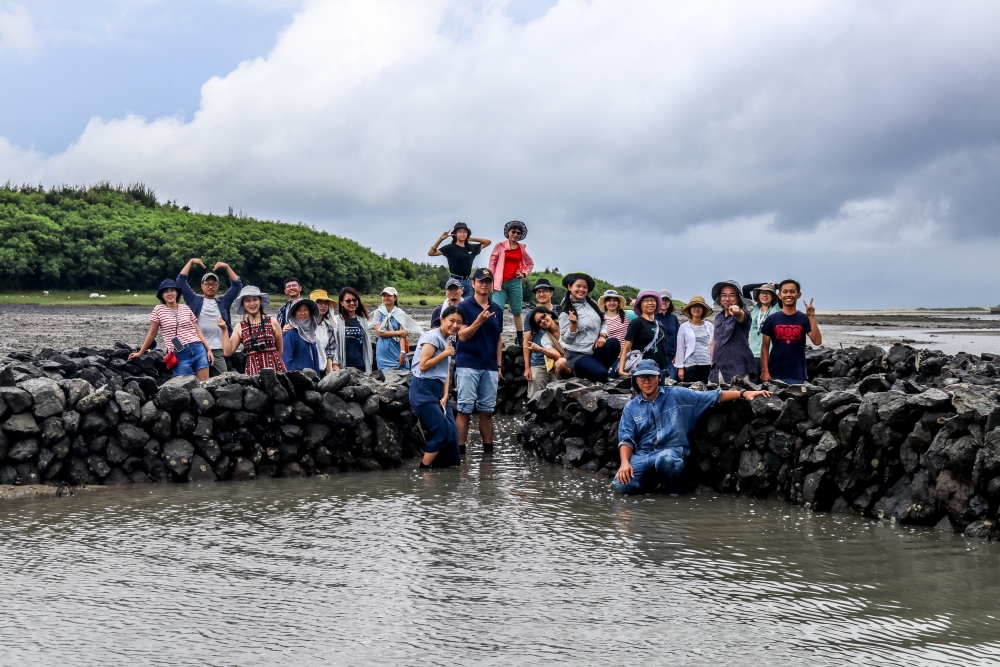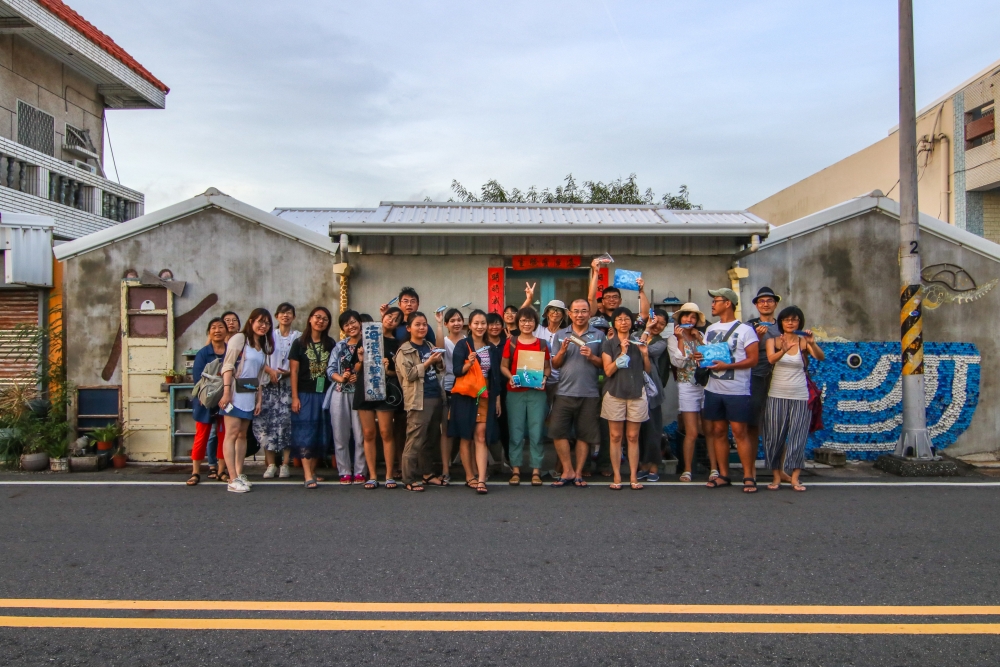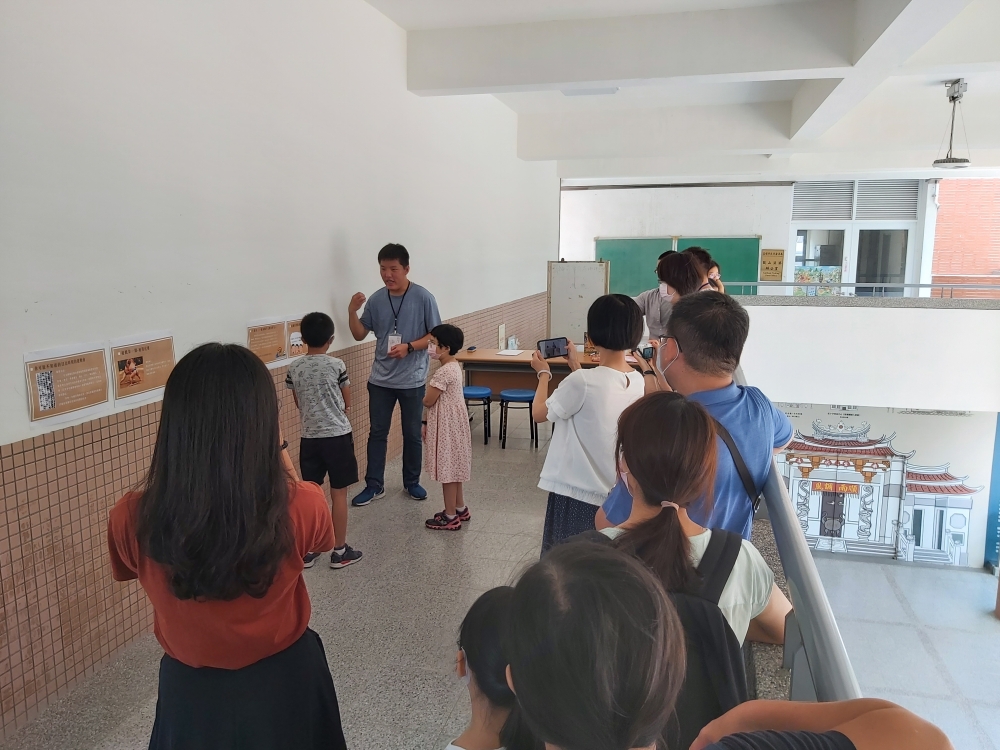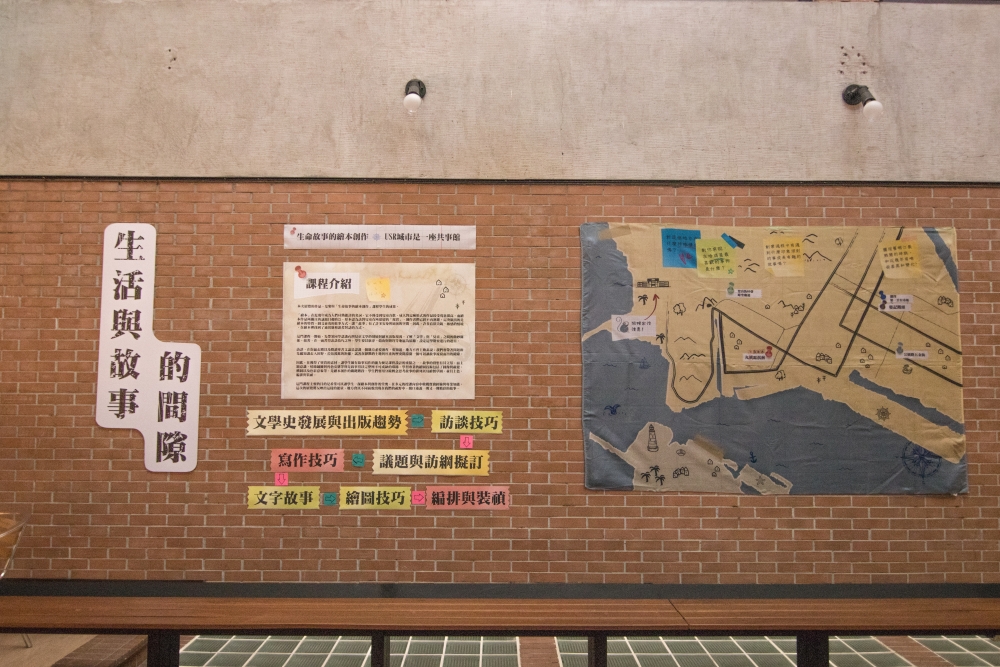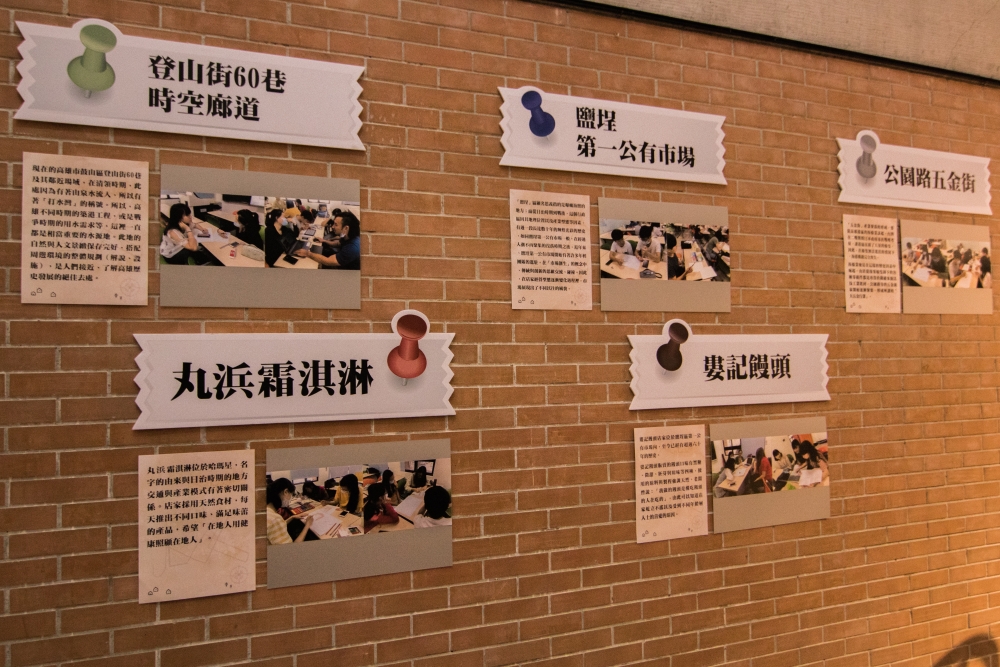The Ocean of Memory-Our City as a Commuseum
Sheng Wu, "Youth Beach-Kaohsiung Cijin"
When people talk about Kaohsiung, they think of the surges of the sea, under which the history and culture of this port city have been developed.
The USR-C project " The City as a Commuseum-Socially Embedded Community Engagement " carried out by National Sun Yat-sen University has three main themes, which are "Landscape Sustainability", "Soundscape Festival" and "Vision Brand". Although the approaches and connotations of these three are different, they share the same intention which is to collect and collage the scattered memory pictures of this place together, and to enable the background story of Kaohsiung to be complete again after it has been renamed from ‘Takao’ 100 years ago.
Sound is one of the ways to keep memories, and music evokes general consciousness across generations. The course jointly planned by the project team and Feng Hsin Senior High School for this year was "The Golden Song of Life". Students were asked to use cassettes to record the unforgettable songs in their lives and design the cassette tape covers and compose the copywriting by themselves. Some students picked up songs of Teresa Teng, Qianyu Long, etc. which seemed not to match their ages yet what flew in the songs was actually the chattering with their grandmas. Some students recorded songs just wanting to comfort their friends who lost their loved ones.
Cassettes are items that seemed to have been extinct as time passed by because they are no longer needed by people just like any damaged objects. However, Hua-Mei Chui's "Sustainability and Social Innovation" course led students to understand the urgency of the ‘circular economy thinking’ in today’s world in an attempt to recover the original value of the objects which are to be discarded. She emphasized that before an object really loses its functionality, we actually have many ways to keep and use it.
In fact, there are quite a few things we need to keep with us such as traditional culture and skills. The project team has been cooperating with Kaohsiung Shadow Puppet Theater since 2019 to bring this folk art to the campus and facilitate its circulation among different departments of the schools. A teacher of the Department of Photonics said that it was amazing that optics could be combined with shadow puppet techniques to create effects that caught children's eyes. As for teachers and students of the Department of the Chinese Literature, they exerted their writing skills to write the script in Taiwanese for several brilliant shadow puppet plays.
Space can’t speak; otherwise, it would talk about all the stories about people from long ago. When Mei-Hsiang Wang and I-Chih Lee prepared their course "Cultural and Creative Design of Community" by taking students to community interviews, they surprisingly learned that there used to be a small zoo in Gushan Elementary School when parents of the school children told with a smile that they used to poke the lion in the cage with a broom when they did the campus cleaning.
Another surprise of this space was that there used to be a sports category of "Sumo" in the elementary school Sports Day during the Japanese occupation period. So they designed a series of games which allowed school children to recall this history sealed in dust with their muscle memories—for example, children needed to mimic the movements of animals or take turns to raise their legs and stretch their limbs like the sumo wrestlers do before the match begins.
Another question waiting for our inquiries in person was the ‘Mystery of the Island’s Change’. The "Map Archaeology × City Detective-Takao First Street" reading club included in the course of " kitin thak chheh" was designed and hosted by Kaohsiung No. 1 Community University and the project team. The participants traced the old cadastral documents and compared the past appearance to the present Cijin neighborhood changes. They also used tools for the surveying and mapping of the texture and structure of historic buildings, and expressed their sentimental appreciation of the geographical landscape in their poetry.
The effectiveness of image language is powerful. The "Illustrating with Life Stories: Picture Book Composition" course provided by Ming-Yuan Tsai and Ying-Tze Chen led students towards a journey of creation and learning about this trendy way of storytelling. They started from collecting materials and then determined themes, wrote text and drew illustrations, through which the local images and details of ordinary people's lives that were easily overlooked were reproduced in the picture books with vivid images and harmonious colors.
The project team organized many public events this year in hope that more people would join and work together for the task. People can enjoy the creative installation art of "Summer Night Light in Yancheng" displayed in Yancheng District, then step into the air-raid shelter located in the tunnel connecting to National Sun Yat-sen University to experience the "Fantasy Light and Shadow Show" presented with the Shadow Puppet Theater and light-shadow installations created by elementary and high school as well as university students. Then people are invited to a music archive full of life’s beauty and sorrow named "My! Life Golden Song" compiled by high school students in their achievement exhibition. Finally, the visitors will be directed to the "Gaps between Life and Story" section to browse through the picture books presented by earnest students.
In addition, project team members and inter-school co-training partners also visited Lanyu and Penghu to exchange ideas with local NGOs and returned youths on topics such as environmental sustainability and local revitalization.
The team has taken root in Cijin and started a series of actions since the previous project " Participatory University-Museum Partnerships ". In this context, we know that the passages of brilliance and magnificence can rarely be found on but far beneath the surface of the sea instead when we take a further look at the ocean of memory.
Therefore, we should be good at swimming and submerge ourselves in the innermost parts of serenity to catch the sinking history. This is why the team members have worked very hard to make many stories appear on the surface and have tried various ways to manifest the culture and traditions, which is the original intention of the project and also an indispensable element for a city to become great.
-
University characteristic Expansion Stage Project
-
Kaohsiung City
-
National Sun Yat-sen University
Further reading
Measures for Leaving a Message to Enter the Draw for the Live Streaming of the Opening Ceremony
-
Event Period
From 13:00 to 14:00 on December 12 (Saturday), 2020
-
Event Measures
Log in to your personal Facebook or Google account to proceed with leaving a message; each account with a successful message of #2020usrexpo left before the end of the live streaming of the opening ceremony will have an opportunity to enter the draw, and each account is restricted to winning the prize once only.
-
List of Winners
On December 14 (Monday), 2020, the list of winners will be announced on the event official website https://2020usrexpo.org/) Announcement of the list of winners
Event Prize Content
-
1st Prize
“Huei Yeh” Power Extreme Massage Gun 1 winner
-
2nd Prize
Nestle Dolce Gusto Genio 2 1 winner
-
3rd Prize
KINYO Bluetooth 5.0 Wireless Speaker 2 winner
-
4th Prize
7-11 Gift Voucher valued at NT$200 27 winner
Announcement of the list of winners
The various prizes are expected to be notified via email and also announced on the event official website on December 14 (Monday), please will the prize winners pay attention to the prize-winning information, and send back the relevant documents according to the notices & explanations; no separate notification will be issued.
Notices
- The event period for this event is based on Taiwan time, and the delivery of the rewards is restricted to regions including Taiwan, Penghu, Kinmen, and Matsu.
- Please refer to the actual products for the event rewards, the pictures used on the website are for reference only; no request for changing colors, specs, transfers, or cash redemption will be accepted.
- Our event organizer will not be liable for the follow-up warranty and maintenance of the winning rewards; once the rewards have been collected, signed, and accepted, no reissuance of the rewards will be available if the rewards have been lost, peculated, discarded, or damaged. Please refer to the actual products for the prize rewards, no return or exchange will be accepted; the prize winner must contact the manufacturer of the rewards if there is any issue regarding malfunctioning, damage, or maintenance.
- 1st prize ~ 2nd prize (Winning prizes with a value exceeding NT$1,000 (inclusive): Each prize winner should fill out the “Reward Collection Application and Receipt (will be announced together with the announcement of the list of winners)” within 7 days (including holidays based on the post stamp) starting from the next day with the announcement of the list of winners, and must provide a copy of both sides of the ID card. The copy must be sent to the specified place via registered mail; those passing the deadline will be deemed to give up the prize and rights, and no objections will be accepted from the prize winners.
- 3rd Prize ~ 4th Prize (Winning prizes with a value less than NT$1,000 (inclusive): Prize winners should reply to the prize-winning notifying letter via Email within 7 days (including holidays) starting from the next day of the announcement of the list of winners, to confirm the collection of the rewards and to fill out the relevant info for sending the rewards (to confirm the address for sending the gift), and to accelerate the follow-up qualification review. If the prize winners do not complete the relevant info before the deadline, they will be deemed to give up the opportunity to collect the rewards, and no alternative gifts or reissuance of gifts will be available.
- When the prize winners have completed filling out the prize-winning info, the organizer will double-check the identification data of the prize winners, the rewards will only be sent out when all data is correct.
- All prize-winning qualification needs to be approved by the organizer before it becomes effective, all reviewing standards are based on the organizer as the only reference.
- If the prize winner did not fill in the data complete and correct, or cannot be in contact, or did not send back the required data within the announced time of the rewards, the prize winner will then be deemed to voluntarily give up the prize, no separate notification will be announced.
- According to the R.O.C Tax Act, if the prize winner is an individual residing in Taiwan, and the prize amount (value) exceeds NT$1,000 (inclusive), then a copy of both sides of the ID card will need to be handed in for taxation, which will be incorporated into individual income for the annual taxation. If the prize winner is not an individual residing in Taiwan, 20% of reward tax must be deducted from the reward first regardless of the prize amount before the prize winner can collect the reward. If the prize winner is not an adult, a household registration transcript must be provided along with a letter of consent from the legal representative. If the prize winner is unwilling to pay the tax first, he/she will be deemed to give up the reward, and no objections will be accepted.
- If the prize winner is in violation of the relevant event measures or has other dissents, the organizer is allowed to retrieve the reward and no objections from the prize winner will be accepted. If a judicial dispute is involved, all legal liabilities will be held by the individual. The organizer will not be liable.
- If it is confirmed that the participant used a hacker program or other method that evidently violates the fairness of the event in an attempt to influence the event, the organizer is then allowed to disqualify the participant immediately or to cancel the prize-winning qualification. Compensation will be liable if a loss is caused for the organizer due to this.
- For reasons that the organizer are not liable for, including a computer, network, telephone, or technique issues resulting in the delay, loss, incorrect, unidentifiable, or damaged data uploaded by the participants, the organizer will not be liable for any legal liability, and no objections from the participants and prize winners will be accepted.
- The organizer reserves the rights to review the qualification of the event participants, if the organizer or a third party has reported that the participants are found to use methods that are intentional or evidently violate the fairness of the event, or do not conform to the rules of this event, the organizer will then be allowed to cancel the prize immediately.
- The event measures are stated on the event platform, the organizer reserves the right to alter the event details at any time (participating method, gift content and quantity…etc.); the participants must agree completely to follow and obey the alterations of the event without any objection. Please refer to the announcement of the event measures if alternations have been made to the event measures, no separate notification will be available.
- Unmentioned matters of this event should be handled according to the relevant rules of the civil law; the organizer reserves the rights to maintain, modify, cease and explain the content, as well as to cancel the prize-winning qualification of any prize winner influencing other prize winners’ rights. Refer to the announcement on the platform for the modification info; no separate notification will be available.
- Participants in the event agree to accept the event measures and notices, if, in violation, the organizer will then be allowed to cancel the qualification of the participant or the prize winner, and then request the participant for compensation for the losses caused.
- When the event is unable to be conducted due to force majeure causes, the organizer has the rights to cancel, terminate, modify, or cease the event. Participants in the event are deemed to accept the effectiveness of the rules, for unmentioned matters, the organizer reserves the rights to modify, terminate, and alter the event content details without giving out a separate notification.
TOP



